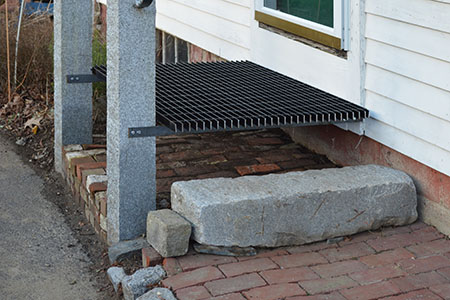
Many years ago, when I was doing large-scale work on my house, I cobbled together a "temporary" set of steps and landing for my front door out of ratty, dirty scrap wood. To preserve these from imminent destruction by the elements, I coated them with a mixture of linseed oil and thinner, a frequent practice of yore in New England. That worked quite well, and I renewed the treatment every year or so.
But linseed oil treatment has pretty much gone the way of horse-and-buggy, and sealing wax, in our environmentally conscious and prepackaged age.
For a long time, I've dreamed of a metal grate, a sturdy, industrial esthetic, on which rain, ice and snow could not gather. I searched for a suitable piece of steel, but such things were not set up for homeowers' convenience, necessitating the order of a large piece of metal, and a crane or forklift to unload it from the truck.
In 2023, Amazon has such things ready-made, cut to size, and delivered by UPS to your door.
It works just as I'd hoped (though without the test of snow yet). – I would not recommend the approach for people who wear high heels or have dogs, but those worries are not mine.
This material first appeared on November 26 as a guest column in the Ipswich Local News.
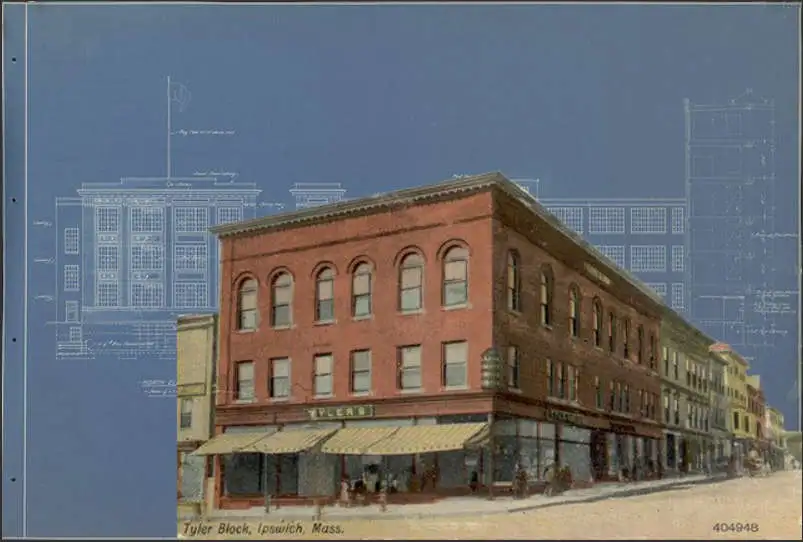
Proponents hope that the incoming MBTA Community (Section 3A) requirements will help revitalize downtown Ipswich; opponents dread that they will lead to its destruction.
The regulations will do neither.
3A will require that Ipswich allow a density of at least 15 dwelling units/acre by right in some areas. Current downtown zoning allows up to 22 units/acre for mixed-use development by special permit.
A few owners have made use of the zoning provisions to add units to properties they already have.
But the multi-family development underway at 5-11 Washington Street (the former car wash location) is in fact the first entirely new construction project under the applicable zoning. The planned density works out to be 16 units/acre.
Why hasn’t there been more downtown development if it’s allowed? Simply put, the area was long ago divided into small pieces and built out.
The median lot size in the central business zoning district is somewhat below one-fifth of an acre — the minimum lot size for a three-unit development at 15 units/acre. This means that the majority of current lots are simply too small for multi-families under 3A.
Development downtown must also dodge any number of other obstacles: streets, required parking areas, wetlands, historic preservation requirements, and government-owned land.
Most importantly, new building cannot move onto any square already taken by another building without buying out the land and structures on that square. Nearly always, this expense would be prohibitive.
The author calculates that about 80% of the downtown area is unsuitable for development in any event. Beyond that, things would be far from easy: there are no signs proclaiming “land for sale.”
All in all, it appears that simple paper changes in downtown zoning will at least provide Ipswich with the acreage Section 3A requires to be close to the train station but will provide little additional housing.
The town will need to do more in areas beyond downtown. There are at least three possible directions:
I’ll vote for option #3.
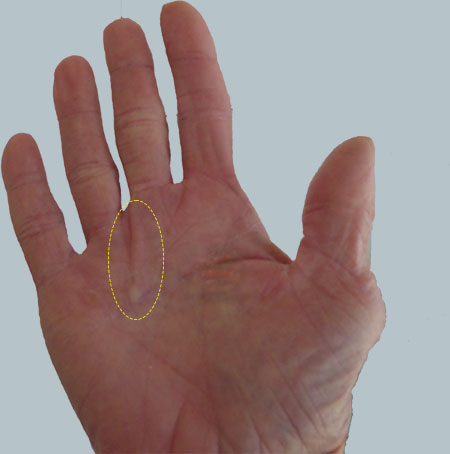
For the last couple of years or so, a lump on the palm of my hand has been slowly emerging. I've mentally dismissed it as a cyst or lipoma, clearly abnormal in appearance but harmless.
I saw a hand surgeon a few days ago. There is no settled diagnosis, but it seems most likely that it is a Dupuytren's nodule. Sometimes, such nodules go away of their own accord. More often, they are the precursors of disabling finger contractures. Inelastic cords may start to form to the fingers. There may be the beginning of one in the picture here. Eventually, the hand may be unable to straighten itself out
So far, the evolution has been very slow. With luck, that course will continue and the mass will remain asymptomatic.
But it is also possible that the pace of things will pick up and that some fingers will begin to lose function. That would be disastrous for my piano playing. Misha Dichter is a noted concert pianist who suffered from Dupuytren's, with eventual surgical correction, a marathon procedure lasting 2 ½ hours, with months of physical therapy afterwards.
I fervently hope that, whatever the lump is, it goes about its business slowly, or perhaps changes its mind. We'll see.

This website is now ten years old – an anniversary traditionally associated with a gift of tin.
It came to be as a byproduct of my creation of a website for my mother![]() , who no longer could communicate for herself, but had family across the country who cared about her but couldn't easily travel.
, who no longer could communicate for herself, but had family across the country who cared about her but couldn't easily travel.
This site has evolved. A few years ago I did large-scale housecleaning and redesign, cutting the coverage in half to my core activities and blog. I am happy with the current modest scope. It supplies some information about me to a small circle of remote family, neighbors, and occasional contacts.
The blog serves as my diary. My thinking is, if I am doing nothing of even minor interest or note, I am wasting my God-given gift of time – and if my life is full of unimportant events, it should at least be an open book. As Montesquieu wrote in The Spirit of Law, Solon made a crime of idleness and required that each citizen be accountable to the others for how he earned his living. (I can't speak to the accuracy of the historical report, but certainly agree with the sentiment it espouses.)
(Image from Kovels Antique Trader).

I have become increasingly interested the counterpoint of baroque music. The four-voice style is fundamental in Western classical music.
The harpsichord, and later the piano, was the most common vehicle for that music. At the apex of things was the organ, which had a human-like ability to sustain the notes, and had multiple manuals (keyboards) and pedals to boot.
Before I bought a real piano, I spent a couple of years learning to play with relatively inexpensive electronic keyboards. I have searched around for an equivalent with an organ pedalboard, but have not found a ready answer. There are two-manual digital organs with a full set of pedals but, purchased new, they are not at all cheap.
The organ pictured here is styled a "practice organ." It is priced at €22,000 F.O.B. Wicklow, Ireland, which would bring its cost, delivered and set up in New England, somewhat shy of $30,000. That seems to be about the starting price range for a serious organ, mechanical or digital. From there, the costs go up to $1,000,000 or so.
I have begun to look around for a much cheaper used organ that could serve me for a year or sp, long enough to try things out. From what I've seen so far, I am feeling hopeful that I may be able to find something suitable.
To be continued!
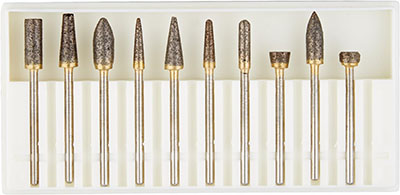
The diamond anniverary of my time on earth is upon us. (I am using roundabout phrasing for caution's sake, in this era of AI and identify theft. And if you're wondering how the picture fits with diamonds, keep reading.)
I have been and remain very fortunate, as is reflected in these pages.
My father, at a similar point in his life, had just been discharged from the hospital for surgery to repair a hernia strangulating his bowel. By then he was having trouble walking, reflecting, I suspect, a series of small strokes. He also had a Parkinson's-like disorder that slowed his movement and left him emotionally a depressed and drained, and to boot compulsive, wreck. (Perhaps it wasn't Parkinson's, but progressive supranuclear palsy, or some other disconfiguration of tissues that isn't presently named.) This is to say nothing of the diagnosis that come a bit later of five-vessel cardiac disease, with aortic regurgitation, certainly present by that point, though not yet so diagnosed. His years after that had few moments of joy, but he wanted to live as long as possible. He did.
At a parallel point in my mother's life, she was mostly functioning very well, but with arthritis that confined her beloved gardening spells to an hour a day. She largely ignored her own problems in order to take care of my father. Within a couple of years, her presumptive Alzheimer's had progressed to the point it became evident to her. She lived for many years after that, profoundly demented, but quite happy and unaware that anything was different from normal.
My younger brother died twenty-one years before he would have made it to my age. He was not prepared for it, and left behind a mess for his family – whose lives had enough messes in them even without the loss of their provider and mainstay, shall we say.
Once again, I am very fortunate. I find signs of the passage of time in my own life – and outside my own life! – which I accept and even welcome. There is joy in the present days, but I would not want to make them last forever, even if I could.
For the occasion, I bought myself, for a number of dollars very close to my age, a new set of diamond abrasive burrs for my stone carving. Industrial quality diamonds have become commonplace and inexpensive today. These tools will bring me much more joy than any extravagent jewel.

A few days after my last post, John Deere returned my tractor to me, fixed. They replaced the whole mower deck, which lists for $900 on Amazon. There was no charge for the parts, labor, or pickup and delivery. This was beyond my expectations for warranty service, I must say. I have cut the lawn twice since then. It is a delight not having to struggle with the process.
Meanwhile, I have been working at clearing an area of my yard that is overgrown. I decided that I needed (soon, not now) to bite the bullet on devoting time to my brush chipper, which refused to start last summer. Drat. On the face of things, this would be a dirty, sticky, yucky task.
Today, I decided to give it a try, with about zero expectations that the chipper would work.
It came alive on the second pull! Hurrah!
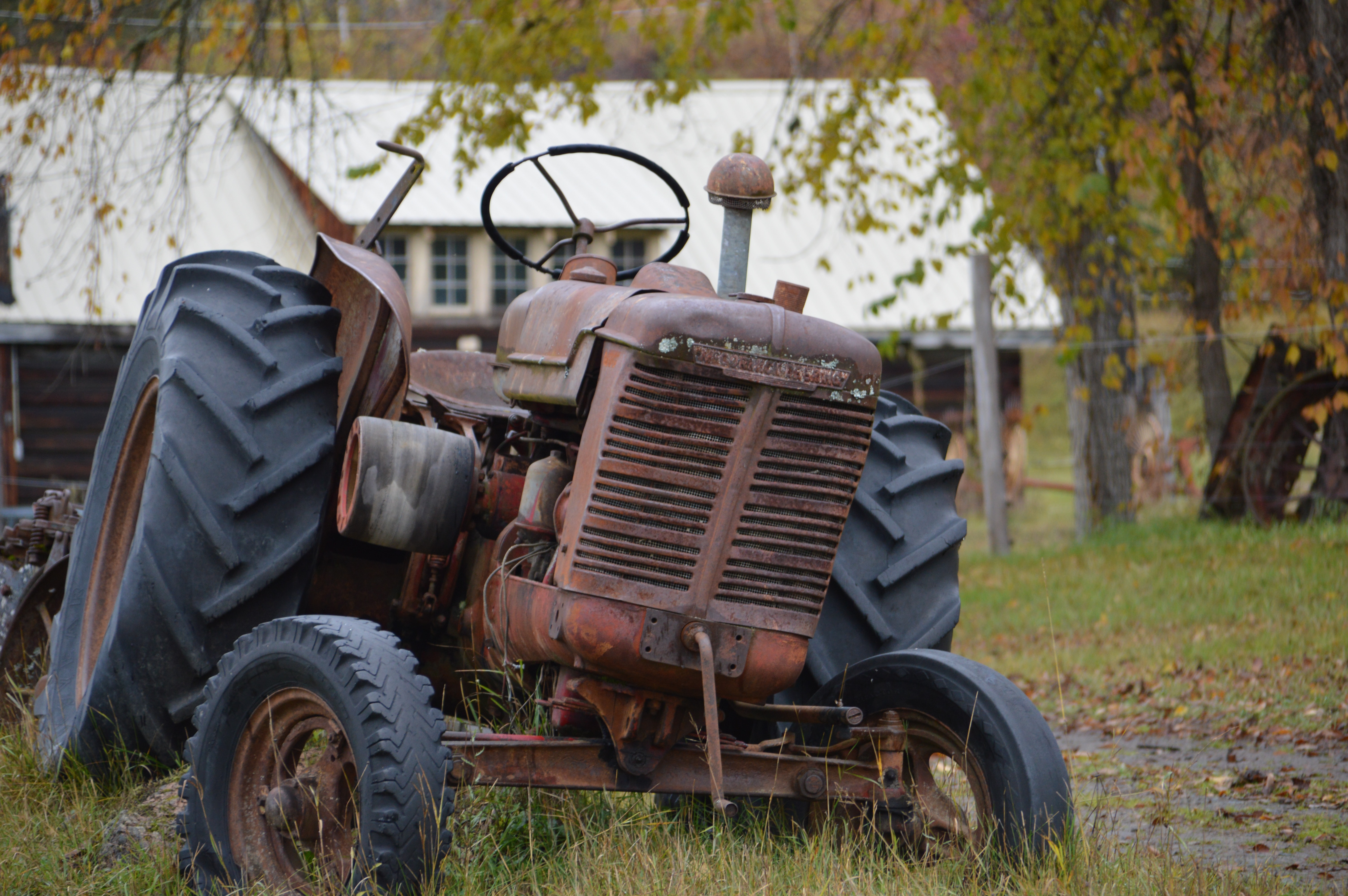
I try to avoid whining here (and elsewhere). A positive approach (usually!) works better, and people have little interest in others' peculiar grouses. Each of us has his emotional Achilles's heel, however, and feels abused when beaten relentlessly on that particular point. My sore spot of long standing, you'll note from following this blog, is machine maintenance. I can't stand it.
The chronicle of events goes back some two years. A repair shop advised me that my old tractor was in good enough shape to be worth repair. After a thorough and able overhaul, in short order it twice had other freak problems that caused it to be immediately unusable, with no warning. Phooey.
Okay. I bought a new one.
The first time I went to cut the lawn, I experienced a freak accident. The mower blade hit a root – over which I'd driven routinely for eleven years – and screwed itself down into the ground, immobilizing the tractor. I worked off and on for three days in freezing weather to release it. (I would have been glad to call an outside service to deal with the situation, but there don't seem to be people who specialize in rescuing tractors that have screwed themselves down to the earth.) Suffice it to say, I tried a number of different approaches. I ended up chiselling away the root, bit by bit, remote under the mower deck, using a flashlight, with the grain of the root going in exactly the wrong direction. It was an extremely slow process. I got the tractor freed just in time to garage it out of the winter snow.
In spring, after spending some time going over the machine for potential damage from the last season's accident, I set out to cut the lawn.
The tractor made it most of the way through, but then the cable to the mower deck broke, so the blades didn't move.
The new tractor is back at the dealer's again, and has been for a month. Eventually, it will make its way back, repaired. In the meantime, I am mowing the lawn with a small push mower, which is where I was two years ago. The new machine, which I bought so I wouldn't have to play repairman with the old one, has taken far more of my time in mechanics than it's given back to me in use.
This, too, shall pass. And, thank heavens, the rest of my life is going far more fortunately.
(Photo by ali elliott on Unsplash)

A blurb in the current issue of is Nature is cute and perceptive, though (unfortunately for casual readership) requires a subscription. The longer full article is open-access.
As the latter notes –
… we found that negative words in news headlines increased consumption rates (and positive words decreased consumption rates). For a headline of average length, each additional negative word increased the click-through rate by 2.3%…
The tendency for individuals to attend to negative news reflects something foundational about human cognition – that humans preferentially attend to negative stimuli across many domains. Attentional biases towards negative stimuli begin in infancy and persist into adulthood as a fast and automatic response. Furthermore, negative information may be more ‘sticky’ in our brains; people weigh negative information more heavily than positive information, when learning about themselves, learning about others and making decisions. This may be due to negative information automatically activating threat responses – knowing about possible negative outcomes allows for planning and avoidance of potentially harmful or painful experiences.
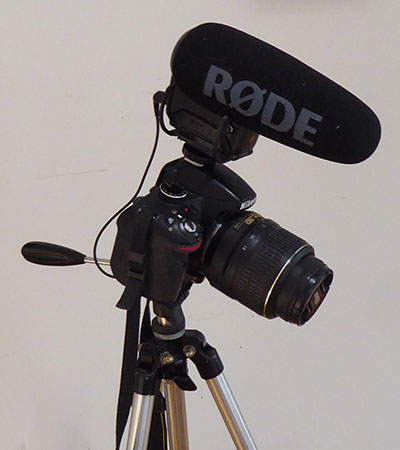
A neighbor recently suggested that I create Instagram posts of my music.
It was a very good idea, though social media are not quite the right channel for me.
I tried playing my piano, for the first time in my life, with video and audio recording. Not surprisingly, I found myself horrified with the initial efforts. My arm and hand posture was appalling, and the musical effect about the same.
I expected that, if the first experiments were successful, that I would need to acquire at least some techical video and audio learning and equipment, and that I would need to work on my piano technique a lot before I would be willing to share it publicly.
The technical aspects and equipment needs of audio and video production are of course endless. In initial browsing, I found that the price of a top-quality microphone for studio recording of classical music was $3,000 – and for serious work, one microphone is hardly enough, to say nothing of other equipment. I ended up spending $300 on a high quality microphone, and bit more on upgrading my clamp-on lights, which I have used regularly for decades for art protography. Overall, a modest investment for things to support core activities, which music and art certainly are for me. The necessary software is included in my Adobe Creative Cloud subscription, as it happens.
Though my starting point for learning about electronic media production was the status of rank beginner, I figured anything so prevalent must be attainable without undue skill or effort, at least at the level of competent amateur. And so it has proved.
My initial chagrin at my musicianship was fully anticipated and very short-lived. I quickly found the recording process amazingly helpful in my musical efforts (again, at the level of competent amateur). I immediately appreciated the critical and urgent need to maintain a constant tempo. Then, the recording enabled me to see moments of hesitation that pointed to unlearned passages and so focus my practice efforts. It doesn't hurt, either, to be doing something with the idea that other people will be paying attention to it. Fortunately, the recording process is much more forgiving than live performances, when the musician has exactly one chance to get things perfect.
This material first appeared on January 9 as a guest column in the Ipswich Local News.
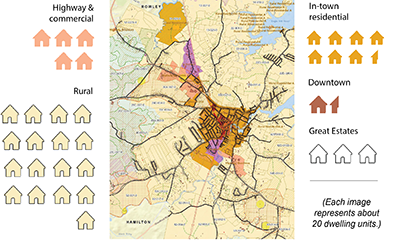
In the years since 2000, Ipswich has seen about 685 new housing units built.
About 5% of those are in the downtown area. This is in contrast to the focus of the Town and the state MBTA Community program on the town center.
Annual growth has averaged about 30 units, with some hills and valleys as large projects come online. However, over a longer time frame, growth has not accelerated.
These are some of the findings of a review of 2000-2021 data from the Ipswich Assessor's Office.
The Town’s Community Development Plan (CDP) and Housing Production Plan (HPP) have explored Ipswich Housing in depth and proposed directions. Both find a significant shortage of housing and focus on possibilities for the downtown area.
Neither offers broad analysis of root causes or review of what building has taken place in recent years.
The state recently published final regulations for its MBTA Community program. (See ipswichmbta.org for further information.) At least 40% of the required new zoning area must be within half a mile of the Commuter Rail station.
Review of the Assessor’s data found that a majority of the new housing units are in multifamily developments, most of them in large projects. Ten developments accounted for over half of Ipswich newly-built dwelling units.
The average floor area and FY 2022 assessed value of new multifamily units were less than half that of new single-family homes.
Large projects may reflect special circumstances and provisions outside of routine zoning, allowing them in rural districts. For instance, Turner Hill was considered a Great Estate, with cluster planning.
Powder House Village fell under 40B regulations, and Essex Pastures could as well. This designation allows large developments where they would not otherwise have been permitted, even in prized rural areas.
Ipswich zoning in theory allows multifamily housing downtown, but the area was built out long ago. While there are conversions from commercial to residential space at an incremental rate, the Assessor’s data reports no developable lots there currently.
New building added over 100 units to the Town Subsidized Housing Inventory (SHI), and some dozens of other affordable units. Nearly 90% of the SHI additions came in 3 large projects.
The SHI is particularly visible because it is what the State uses to judge whether a community has met its affordability requirements, and is protected against further 40B development.
The Assessor’s data indicated that the number of SHI units added under inclusionary zoning is actually quite small. This is not surprising, since inclusionary zoning applies only to a minority of developments and does not require SHI certification.
Ipswich homebuilding since 2000 used about 400 acres of previously undeveloped land. For comparison, the Assessor’s data indicates about 550 acres currently developable or potentially developable.
A detailed white paper covering this material and a PowerPoint version are available online.

I feel that I can do no better than to take the final lines of James Joyce's Portrait of the Artist as a Young Man, noting that they are dated in spring:
26 April: … Welcome, O Life! I go to encounter for the millionth time the reality of experience and to forge in the smithy of my soul the uncreated conscience of my race.
27 April: Old father, old artificer, stand me now and ever in good stead.
© 2025 Paul Nordberg